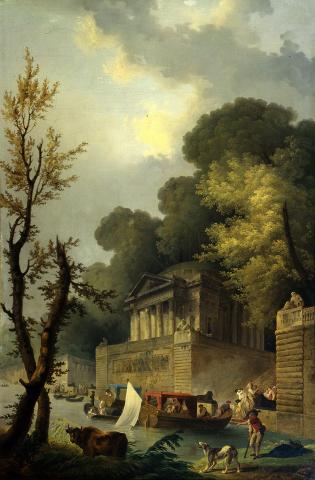Recommendation
In a letter dated 27 January 2009, the Minister for Education, Culture and Science (hereafter referred to as ‘the Minister’) requested the Restitutions Committee to issue a recommendation regarding the decision concerning the application by M.H.-M. of N.Y.C. (hereafter referred to: as ‘the applicant’) dated 1 December 2008 for the restitution of the painting Landscape with classical temple by the artist Hubert Robert. This work is part of the Netherlands Art Property Collection (NK collection) and is administered by the Dutch government under inventory number NK 1432. It is currently on loan to the Dutch Embassy in Budapest, Hungary.
